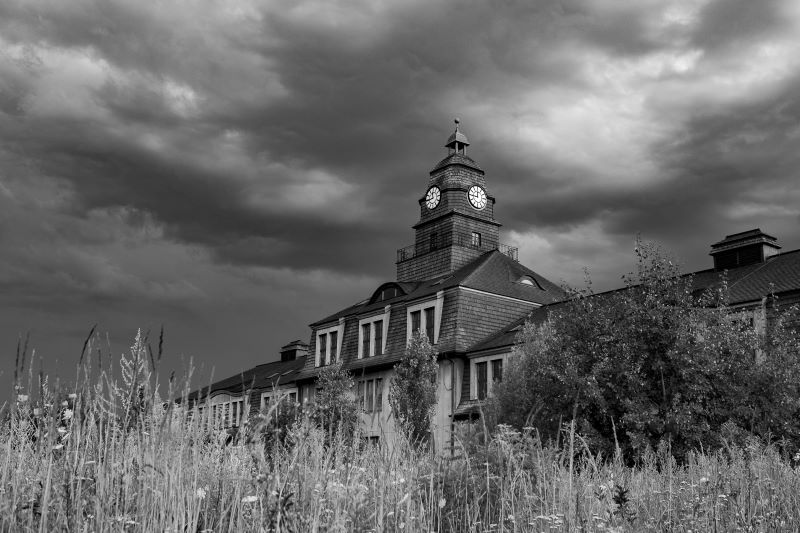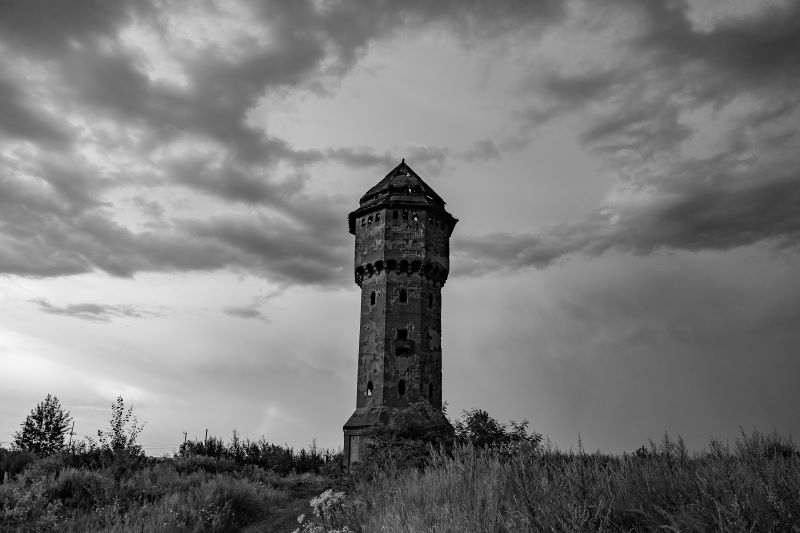Thanks to the commitment of Jolanta Wadowska-Król, a doctor who, during the Polish People’s Republic period, spoke out about the health problems of the children of Szopienice and made it possible to diagnose them with lead poisoning (up till then perceived as an occupational disease of steelworks workers) and implement measures to improve their health conditions. Professor Lucyna Sadzikowska from the Faculty of Humanities of the University of Silesia shares her memories of meetings with the doctor.
Contact
Lucyna Sadzikowska, PhD, DLitt, Assoc. Prof. from the Institute of Literary Studies of the University of Silesia – lucyna.sadzikowska@us.edu.pl
| dr Małgorzata Kłoskowicz |
It’s 1974. Thousands of records laid out on the floor of doctor Jolanta Wadowska-Król’s flat form a grim labyrinth. These are the medical records of children living near the Non-Ferrous Smelting Plant ‘Szopienice’ in Katowice. Many of them have blood lead levels well above the acceptable limit. The diagnosis is surprising — it’s lead poisoning, an occupational disease affecting workers in daily contact with toxic metals, causing damage to the haematopoietic and nervous systems, among other things. And so, the fight for the health and lives of the doctor’s young patients begins.

Buildings of the former Uthemann Zinc Smelter in Katowice-Szopienice | Photo: Rafał Opalski
‘It was done quietly. Laboratories did the testing, but nobody talked about it’, comments one of the interviewees of Lucyna Sadzikowska, PhD, DLitt, Associate Professor, who got interested in the history of leadlings, as the residents of Szopienice suffering from lead poisoning were called colloquially.
It all started with the discussions around the honorary doctorate degree of the University of Silesia received by doctor Jolanta Wadowska-Król. It was, among other things, a sign of gratitude for the actions she took. She treated thousands of children who in the 1970s were suffering from lead poisoning or were in risk of developing it due to the place where they lived. The houses located closest to the smelting plant were also demolished and the families living there were given flats in other areas of the city.
The literary studies expert decided to learn about the leadlings’ history and create a narratives archive filled with recollections of people who lived through those events. The ‘Szopienice and the leadlings’ case have been a popular topic in Poland for some time now. However, it seems that in the inflow of articles, interviews, reportages, and even a theatre performance, we have forgotten to include the voice of Szopienice’s residents who witnessed it all. I felt that it was worth talking to them. I think that doctor Wadowska-Król thought so as well, and that’s why she decided to help them. She accompanied me during most of the interviews. Her name alone opened many doors. After all, people did not necessarily have to agree to meet a complete stranger, that is, me’, says Lucyna Sadzikowska, PhD, DLitt, Associate Professor, author of the study.
As she herself admits, the first meetings were difficult. They often took place in flats, stairwells, cafés, the places where the interviewees felt the most comfortable. She remembers the first person she interviewed, sitting almost completely still, keeping their back entirely straight, maybe because of stress or perhaps due to the maintained distance.
‘I do not come from Silesia, I do not have a family in Szopienice, so for me it was all very new. I had to learn the words they used, their gestures, and to read their emotions to better understand the people who wanted to tell me something. The picture of Szopienice was slowly becoming the picture of myself. It allowed me to keep distance from my own personal matters and made me aware that even though we don’t share the same past, we live in the same region in the same time’, says the researcher.
She would compare discovering Szopienice to peeling an onion, layer by layer. ‘When it seemed like I knew a lot, I would find out something new shedding a different light on this story. Each voice had something interesting to tell’, she adds. Transformation was the key word. Humans have been changing the natural environment since the beginning of their existence, in the name of industrial development, a better future, a strong country, or whatever else they came up with at each given moment. Upper Silesia in the 1970s wasn’t any different. The collective effort was to be the source of satisfaction. The industrialisation of the region based on the mining and smelting industries was progressing quickly. As a result of hard but solid work of its residents, the landscape slowly began to change. You could earn a pretty penny there, so the subsequent industrial centres attracted not only people from nearby cities but also from other parts of the country, thus influencing both their own lives and lives of whole families, as well as getting etched into people’s memory, which also changed with time.
So, the landscape kept changing. Worth noting is the fact that Szopienice’s residents first and foremost remembered the unpleasant smells and colours.
I remember that when you lived at Burowiec [Katowice’s district], when they let the lead flow, you could — as they say — smell rotten eggs. There was this brown, sometimes yellow smoke. The stench was unbelievable when we lived in there, by the smelting plant.
And also, what stuck with me was that when it got warm, my mom would get annoyed that you couldn’t open the window due to the stench of rotten eggs prevalent in Szopienice. It was as if they mixed something rotten with something sweet. I suspect that they let out the worst things they had at the plant at that time. Under the cover of the night.
I was working in the school there, in the smelting plant. As a teacher, I would show the kids around and tell them what is taking place there. I would ask them if they see ‘colourful’ snow. (…) I thought: ‘It looks funny because the snow is purple, dirty’. On the other hand, I saw this ‘desert’ [desert meaning an area that lacks vegetation].
I remember that there were these holes and large puddles with yellow goo. There were lots of them, these swamps. Large wetlands, I think that there still should be high concentrations of lead there. And we were running around and playing there.
I set out (…) to try and cover our usual route: Wilhelmina, Drugie Szopienice neighbourhood, lakes. The weather was favourable, so we went towards Drugie Szopienice, where there is a moonscape, in the former steelworks area. There is a tower there, with a roof that is crumbling away. A building with a beautiful old clock sits right next to it. Then I noticed a large fence with barbed wire. I peeked in. There I saw huge plastic containers in metal grid. These containers were damaged, there was a brown liquid pouring out.
The first ever man-made desert was created in the vicinity of Uthemann in Szopienice. There was no grass there.
Something strange was happening to animals.
Dogs and cats were dying off. It came as a shock to everyone, they kept wondering what is killing the animals. Nobody suspected lead poisoning
When I moved to Szopienice, we went to the market by Sokolska Street (…). We brought back a small dog. Back then I didn’t know that the dog shouldn’t be let outside. After two months we no longer had a dog, he died of lead poisoning.
A lot of people didn’t connect what was happening with the smelter’s activity. People interviewed by Prof. Lucyna Sadzikowska confirm this. Although the working conditions were tough, good pay made up for it. But that’s not all.
My father-in-law thought the world of the smelting plant. During the family meetings, with grandparents and cousins, they would only talk about the plant because they all worked there. The smelting plant was their life. (…) Many people became depressed when the plant was closed down.

Water tower belonging to the former Uthemann Zinc Smelter in Katowice-Szopienice | Photo: Rafał Opalski
Szopienice were a poor area of Katowice. When the smelting plant was created, nobody was concerned with its impact on the health of the residents. It was seen as a place of work that brings in money. People weren’t aware of the danger. While standing over a lead tank, no one suspected that anything was wrong. Meanwhile, the lead was accumulating in their bodies. It was only when people started talking among themselves about children getting sick that something began to budge in the local population’s collective consciousness. The research carried out thanks to the determination of Dr Jolanta Wadowska-Król showed that the children living in Szopienice had significantly increased levels of lead in their blood and many of them also had worrying symptoms indicative of the disease.
When the doctor took the tests and the lead poisoning issue came up — how should I put it — it did not come as a shock to the workers. But the information about children getting sick was shocking. No one had investigated it before. We all thought that only workers, people working in the smelting plant, with lead, were susceptible to lead poisoning, but we didn’t suspect that children could also get sick.
People would find out about it through word-of-mouth. Some believed it to be true, but others considered it a nothing-burger, only causing issues for the plant and its workers.
I found out about it from Mr Ryszard. Not from an official source, but in secret. The news spread around the plant anyway. He said it to me first: ‘Janusz, if you can, take your little kid and move out of Szopienice as soon as possible’.
When it started, it became a big deal, I mean, it wasn’t mentioned in the press at all, but people spread the news. And there has been much talk about the doctor [Jolanta Wadowska-Król]. They called her Our Lady of Szopienice.
The Sanitary Inspectorate director said that the queen has appeared — Our Lady of Szopienice — and was messing with people’s heads.
Despite the radical opinions, children with elevated levels of lead in their blood were sent to sanatoriums. The employees, in turn, were sent off from their work stations for three months, so that the levels of this toxic element could fall, even though it also accumulated in their bone tissue. The houses closest to the plant were demolished. The soil from the area of the so-called marketplace was removed up to a depth of one metre. Where did they take it? No one remembers… Concrete and asphalt covered many places, effectively making the soil impossible to test today.
Metals cannot be destroyed. They can either float around or [get] deposited, says one of the interviewees. Lead was accumulating both in the soil and in the bodies of Szopienice’s residents.
‘While talking to more and more people, I wondered if everything possible had been done to extend care to leadlings. I have some doubts. I found it striking that many of them, to this day, do not see a cause-and-effect relationship between the disease experienced then, in the 1970s, and their current, often difficult, financial or health situation. If they were aware of this, perhaps they would be able to fight together for the support they undoubtedly deserve’, emphasises the author of the study.
‘Even though the Doctor is no longer with us, I will continue our joint project, the talks with Szopienice’s residents, and I will finish what we have started’, ensures Prof. Lucyna Sadzikowska.
All quoted statements are from the collection of interviews conducted by Prof. Lucyna Sadzikowska between 2021 and 2023. Its publication is planned at the end of 2023.
The article entitled ‘Lead runs through our veins’ was published in ‘No Limits’ no. 2(8)/2023 popular science journal of the University of Silesia.





